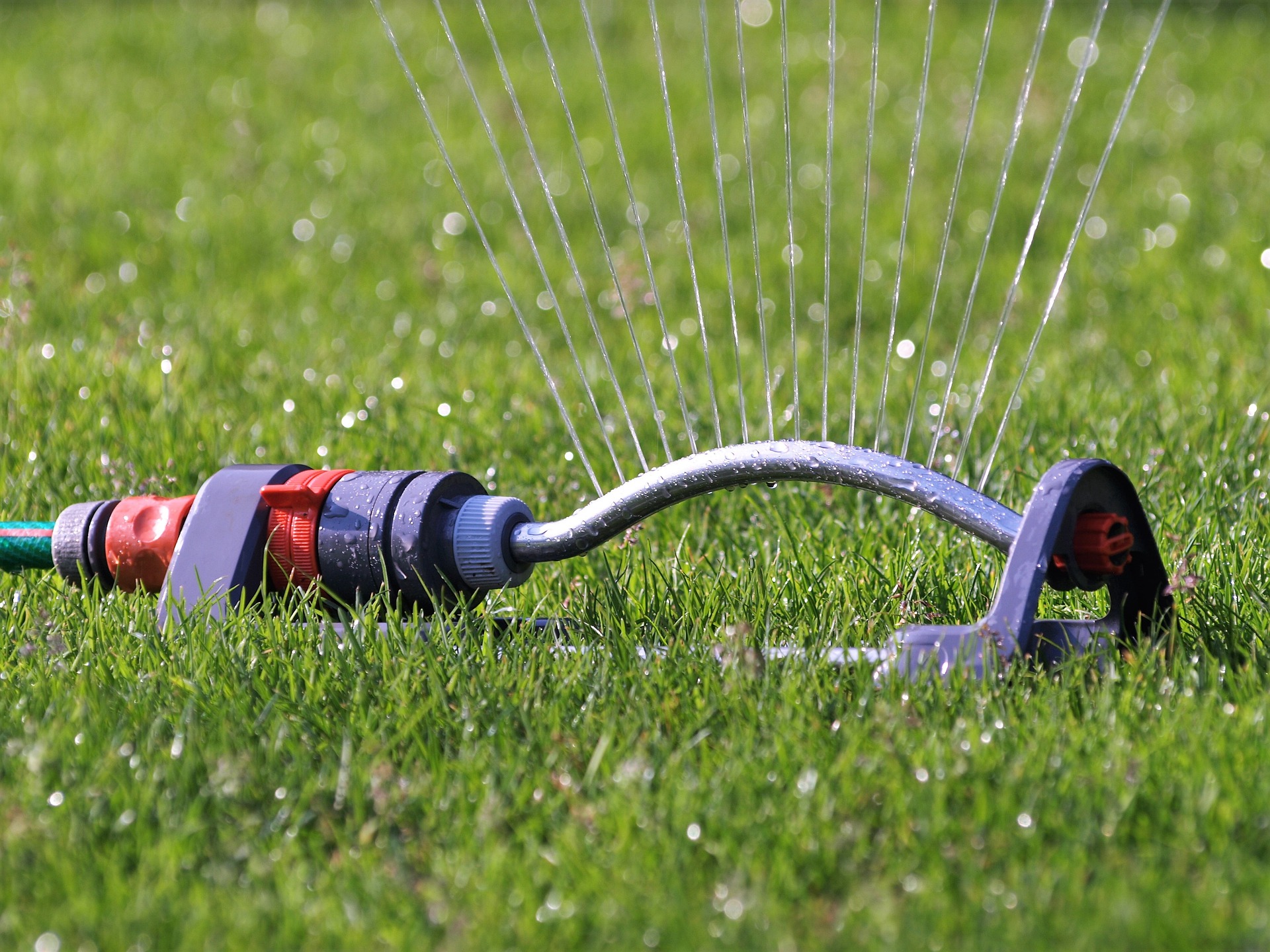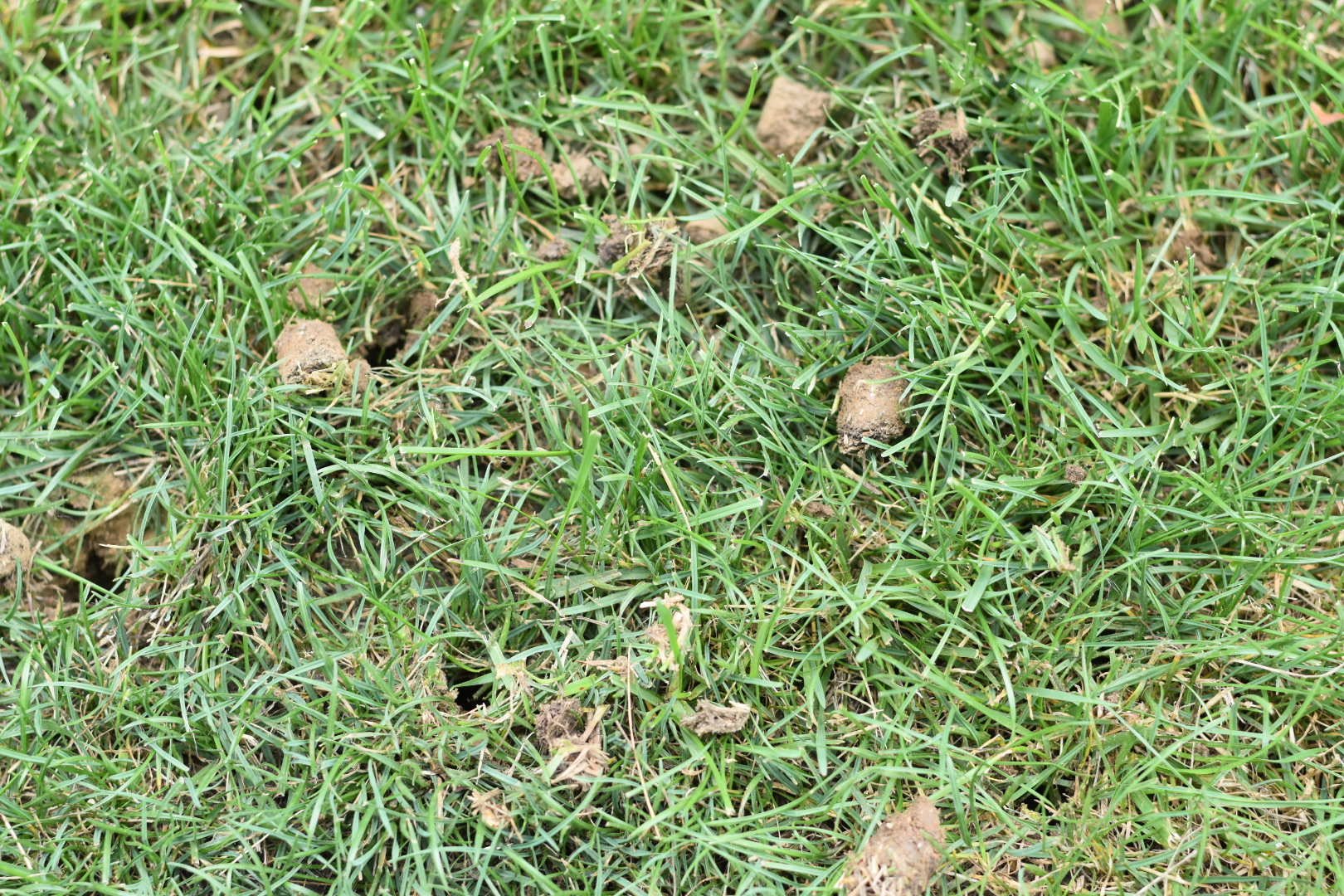/close%20up%20of%20machine%20on%20lawn.jpg)
How to Care for Your Lawn During a Drought
Summer heat and the warm sun all make you want to enjoy the great outdoors in your own backyard.
At least you can balance that out with some time in your air-conditioned house.
Your lawn, though, doesn’t have that opportunity.
And when you’re in a historic drought like Ohio is now, the hot temperatures and lack of water can stress your grass out.
What are the best lawn care practices during a drought? These tips can help:
- Water properly
- Make sure you are on an annual, organic based fertilization program
- Mow correctly
- Aerate and overseed to repair your lawn
Let’s talk about what drought can do to a lawn and how to care for your lawn in a drought so you can get your lawn back to good health.
Maintaining Your Drought-Stressed Lawn
During summer’s dog days, drought stress can impact your lawn.
A lawn that is discolored or isn’t growing well is actually sending you a message, and all this stress can make your lawn look pretty rough.
Try these strategies when you’re attempting to figure out lawn care during a drought.
Water Properly
Water is obviously a crucial component to help relieve your stressed grass as part of lawn care in a drought.
While rains may be frequent during a Northeast Ohio spring, in summer rain can slow down. To ensure your grass receives the water it needs, irrigate or run a sprinkler two to three times per week for approximately 15 to 20 minutes per zone. You want to provide your grass with a good soak; you don’t want to just water for a few minutes or that water irrigation won’t reach your lawn’s roots.
The ultimate goal is to provide your lawn with 1 inch of water weekly – including your sprinklers, irrigation system or the rain Mother Nature delivers. And doing this in the early morning hours reduces evaporation and prevents any lawn diseases from developing or spreading.
And, remember, if the drought is bad enough, the grass may turn brown. This is your lawn’s natural defense mechanism; it enters a dormant state and retains moisture at the plant’s crown. You will still need to water approximately once every two weeks to make sure the plant crowns stay moist.

Make Sure You Are on an Annual Organic Based Fertilization Program
While adding nutrients in the peak of summer may not offer much help to grass suffering from drought, remembering to fertilize as part of a comprehensive, organic lawn care program is crucial. This is especially true in autumn as a best lawn care practice during drought to ensure your grass receives the nutrients it needs after that stress.
Fall fertilization boosts root growth, making your lawn stronger the following spring and summer.
/Live%20Website%20Images/technician-riding-fertilizer.jpg?width=1200&height=676&name=technician-riding-fertilizer.jpg)
Mow Correctly
During summer, your grass’s growth slows down a bit, so your mowing will slow down, too. Maybe instead of every 5 days, you are mowing every 10 days, for instance.
But that doesn’t mean you should slack on the important best practices of mowing. This is an important part of lawn care during a drought.
Make sure to keep your mowing height at 3 to 4 inches. And when you do mow, never remove more than one-third of the grass at one time, or you risk stressing it out more. This can escalate the negative effects of drought. Before you mow, remember to sharpen your mower blades for clean cuts.

Aerate & Overseed to Repair Your Lawn
Fall is the best time to aerate and overseed your Northeast Ohio lawn to help repair it as a part of lawn care during a drought.
Aeration allows your grass to develop stronger roots while exposing the soil to better nutrient uptake. The process removes small plugs of soil, giving your compacted lawn a chance to more easily receive oxygen, nutrients, and water at the root-level where it’s needed most.
Overseeding after aeration works because those removed soil plugs create the perfect holes for seed to settle in and germinate, making overseeding more successful in strengthening and thickening your lawn.

Let Turf Pride Help Your Lawn Beat the Heat
When temperatures rise and the rain stops in Northeast Ohio, the resulting drought can certainly impact your lawn.
We hope the above tips highlighting the best lawn care practices during drought help you get your lawn back into shape after our historic drought. It may take some time, so be patient and remember your lawn is a living plant and needs time to recover from this additional stress.
As you navigate your home lawn post summer drought, you might find it’s overwhelming to figure out what’s happening with your grass or how you can get it to bounce back from excessive dryness and heat. We get that.
Give Turf Pride a call. We are experts in caring for Northeast Ohio lawns, and we can ensure your lawn survives the heat and drought of summer so you can be proud of how your landscape looks all year long.
/Live%20Website%20Images/turf-pride-receptionist-on-phone.jpg?width=1200&height=676&name=turf-pride-receptionist-on-phone.jpg)
Want to improve your Northeast Ohio lawn’s health and help it stay healthy through summer and into fall? Turf Pride can help. Get started today with a free quote. Together, we’ll customize a plan that gives you the most attractive lawn on the block.


